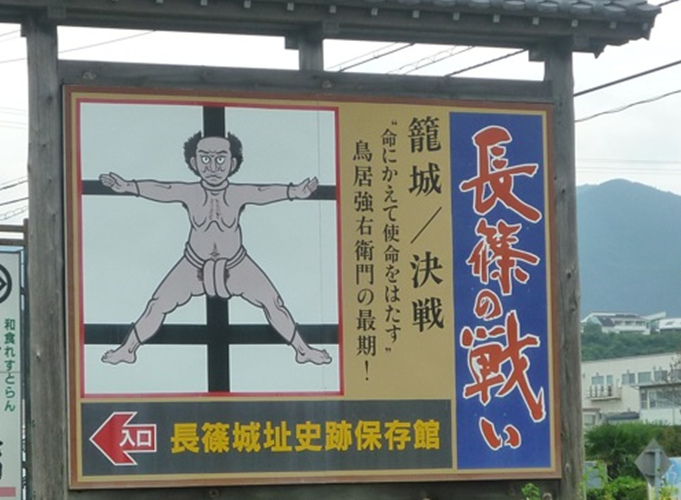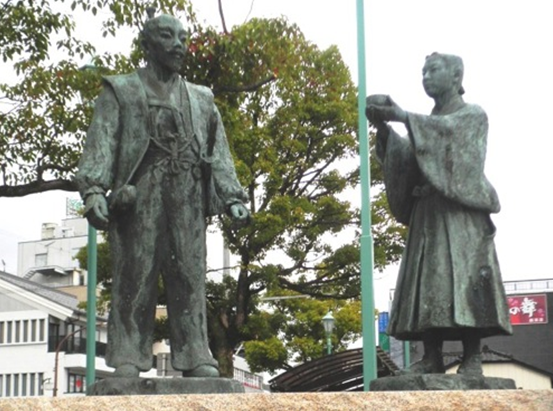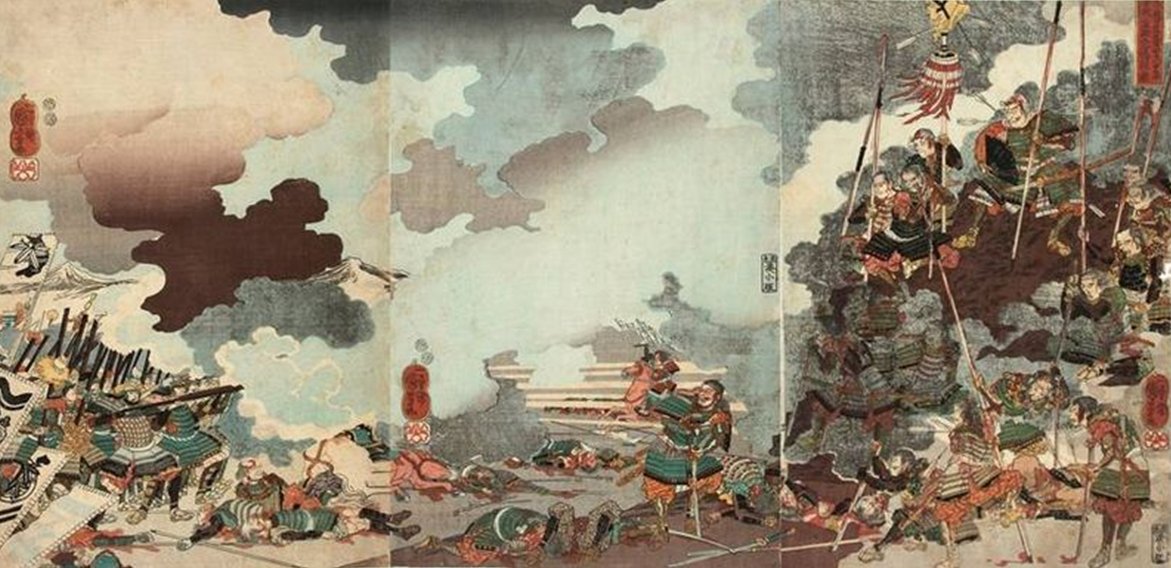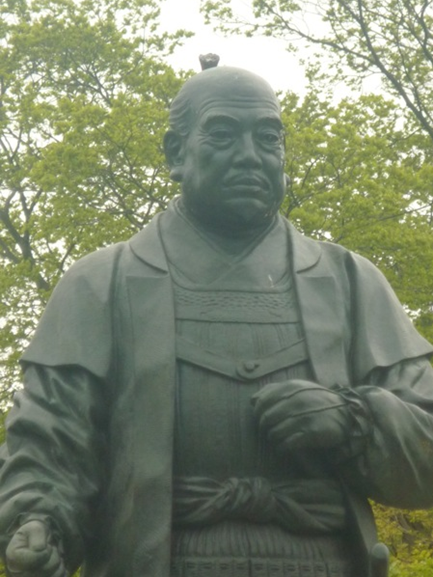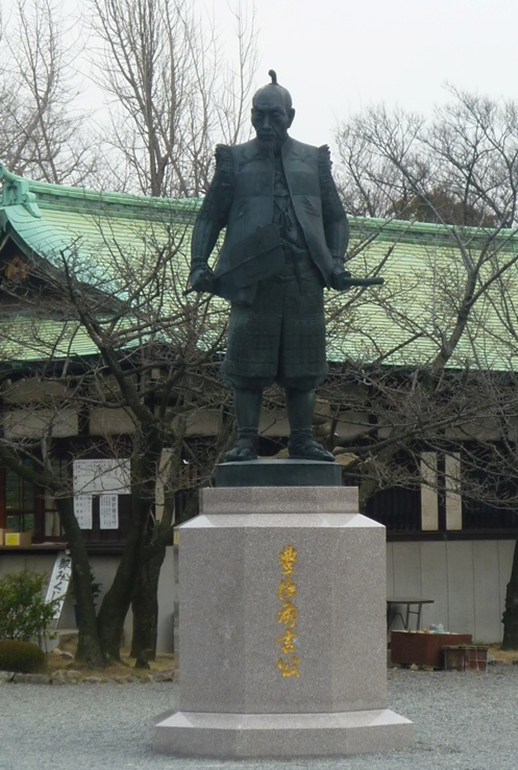関ヶ原で最も首を獲った男「笹の才蔵」
第九回 SAMURAIファイル「可児吉長」
日本が誇る錚々たる戦国武将たちの魅力。
外国人の目に我が国の英雄たちはどう映っているのか?
効率優先、実戦派の変わり者? 可児吉長
「笹の才蔵」
サムライたちが戦いの時に「背旗」の代わりに「笹」を指物として使ったと言われている可児才蔵のニックネームだ。
彼の本名は、可児吉長。
13歳のころ、斎藤龍興に仕えた後は、柴田勝家、明智光秀、前田利家、織田信孝、豊臣秀次、佐々成政、福島正則と渡り歩くこととなる。
「関ヶ原の合戦」の時には、才蔵は福島正則軍の先鋒隊長をつとめ、もちろん、このときも「背旗」の代わりに「笹」を使用していた。
普通サムライたちは、敵の首をとったら、腰にぶら下げて戦いを続けるか自分の陣へ持ち帰るのだが、才蔵は、ここで必殺技の「笹」を使う。
とった首の切り口や耳の穴、鼻の穴、口の中に、目印として「笹」を入れておき、時間の無駄を省いて、すぐに次の敵へと挑むのだ。
そのおかげもあってか、才蔵は17の首をとり(実際には、22の首をとったが見つからなかったという話もある)、関ヶ原の合戦で一番、敵の首をとった武将となる。

(イラスト:クリス・グレン)
他にも才蔵は、自分の兜に、こんな細工をしていた。
兜の「しころ」と鎧の「肩上(わたがみ)」を和紙のヒモで結んで動かないようにしていたのだ。兜と鎧がくっついちゃうワケだから、首が動きにくくなって、それなりに戦いにくかったと思うが、彼によれば、兜が途中で落ちることも軽減されるし、敵から首を狙われにくくなるということらしい。

(写真:兜)
戦う技術も素晴らしかった才蔵だが、こうした頭一つ「ズバ抜ける」ための工夫をしていたところに共感する。
「こいつ、ちょっと変わってるぜ」と他のサムライたちには言われていたかもしれないが、僕は、こういう個性的なSAMURAIも大好きだ!
〈以下 英訳〉
Kani Yoshinaga is better remembered by his nickname of Kani “Saizo”, and due to his strange habit of sticking a freshly cut stalk of bamboo grass in the banner holder on the back of his armor instead of the usual identification flag, claiming the bamboo grass brought him luck. Known as somewhat of a maverick, Saizo entered the services of the Saito Clan of Mino (Gifu) at the age of 13, later coming into the employ of the Shibata following Saito Tatsuoki’s defeat by Oda Nobunaga. Saizo later joined Akechi Mitsuhide until he was killed, then Oda Nobutaka until his death, Toyotomi Hidetsugu until he was ordered to commit seppuku (Hara-Kiri), then Maeda Toshiie until his natural death, and finally the army of Fukushima Masanori.
Saizo was a captain in the Fukushima forces at the time of Sekigahara, and was easily identified on the field with his bushy green sprig of bamboo grass in place of a flag. During battle, the samurai would take the heads of their victims. Often, following a duel in battle, a head would be taken, and in many cases, the victor would temporarily retire from the field to wash, perfume, register and prepare the head for the viewing ceremony, thus being absent from the fight for a short while. Saizo, lusting for blood, refused to leave the battlefield, and often left the heads next to the decapitated body. Some unscrupulous samurai, finding the heads on the battlefield would take them, and claim them as their own kill. Saizo however would leave a little calling card, rolled up bamboo grass leaves in the ears, nostrils, mouth or throat cavities of his victims to later identify them. Although he claimed to have taken at least 22 heads at Sekigahara, 17 were confirmed, giving him the battle’s record number of heads.
Kani Saizo is said to have tied strings of twisted washi paper between the lower rung of his helmet’s neck guard, and the shoulder straps of his armor, a practice that would no doubt have hindered his head movements, but gave his enemy little access to his neck. An expert with the Naginata, a type of glaive, Saizo cut a striking figure.
His unorthodox ways, odd battle flag, and determined, fighting spirit have made him one of my samurai heroes!
〈了〉


